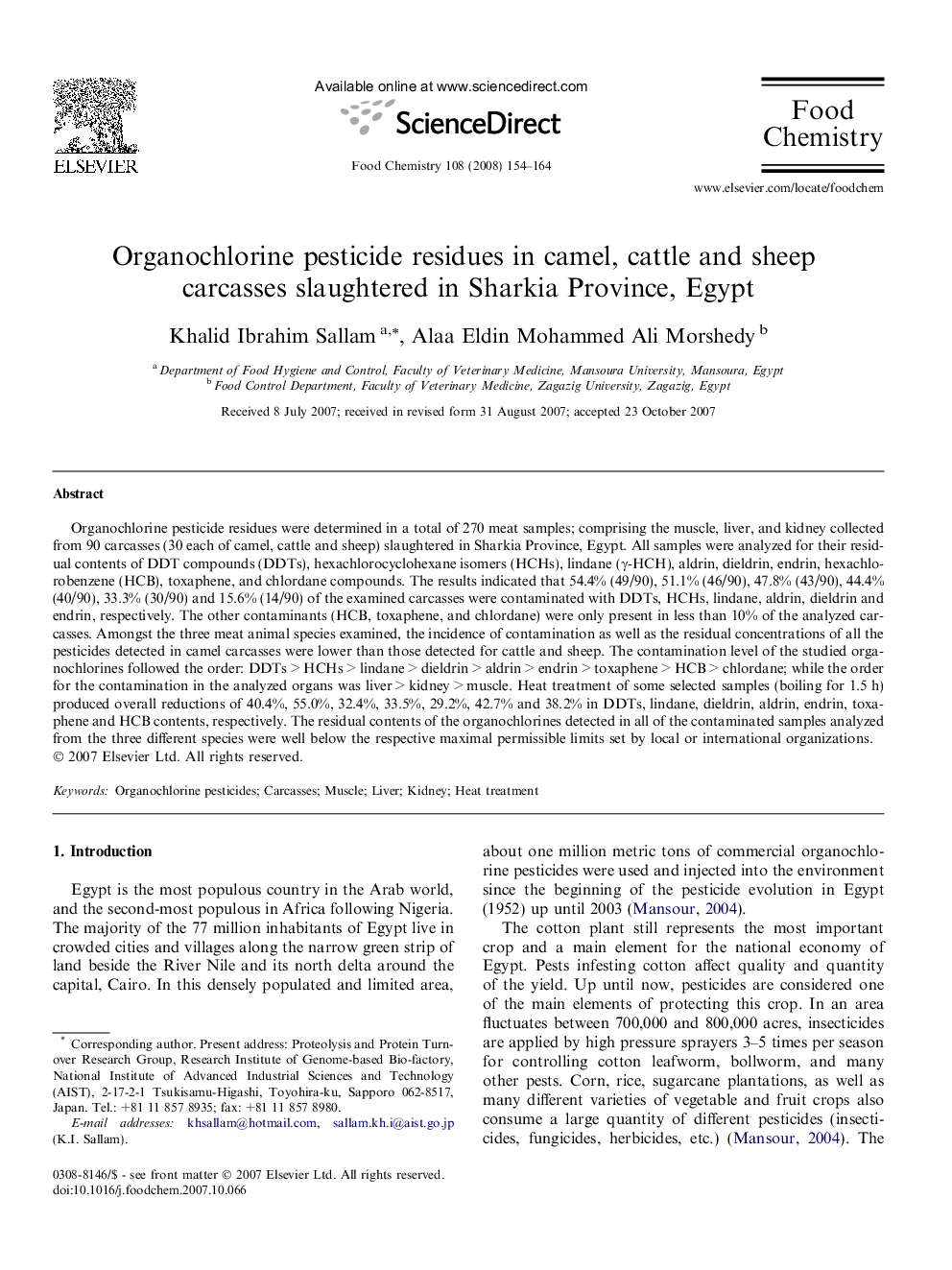| کد مقاله | کد نشریه | سال انتشار | مقاله انگلیسی | نسخه تمام متن |
|---|---|---|---|---|
| 1188890 | 963501 | 2008 | 11 صفحه PDF | دانلود رایگان |

Organochlorine pesticide residues were determined in a total of 270 meat samples; comprising the muscle, liver, and kidney collected from 90 carcasses (30 each of camel, cattle and sheep) slaughtered in Sharkia Province, Egypt. All samples were analyzed for their residual contents of DDT compounds (DDTs), hexachlorocyclohexane isomers (HCHs), lindane (γ-HCH), aldrin, dieldrin, endrin, hexachlorobenzene (HCB), toxaphene, and chlordane compounds. The results indicated that 54.4% (49/90), 51.1% (46/90), 47.8% (43/90), 44.4% (40/90), 33.3% (30/90) and 15.6% (14/90) of the examined carcasses were contaminated with DDTs, HCHs, lindane, aldrin, dieldrin and endrin, respectively. The other contaminants (HCB, toxaphene, and chlordane) were only present in less than 10% of the analyzed carcasses. Amongst the three meat animal species examined, the incidence of contamination as well as the residual concentrations of all the pesticides detected in camel carcasses were lower than those detected for cattle and sheep. The contamination level of the studied organochlorines followed the order: DDTs > HCHs > lindane > dieldrin > aldrin > endrin > toxaphene > HCB > chlordane; while the order for the contamination in the analyzed organs was liver > kidney > muscle. Heat treatment of some selected samples (boiling for 1.5 h) produced overall reductions of 40.4%, 55.0%, 32.4%, 33.5%, 29.2%, 42.7% and 38.2% in DDTs, lindane, dieldrin, aldrin, endrin, toxaphene and HCB contents, respectively. The residual contents of the organochlorines detected in all of the contaminated samples analyzed from the three different species were well below the respective maximal permissible limits set by local or international organizations.
Journal: Food Chemistry - Volume 108, Issue 1, 1 May 2008, Pages 154–164